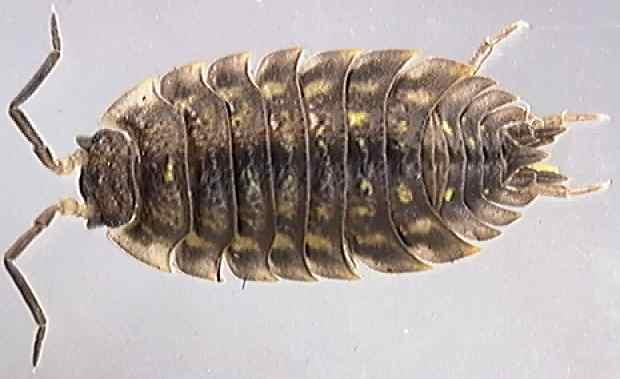Oniscus asellus, the common woodlouse, is one of the largest and most common species of woodlouse in the British Isles and Western and Northern Europe, growing to lengths of 16 mm and widths of 6 mm. They are generally flatter than other large woodlice, and their bodies are usually brownish-black in colour, with paler mottling and very pale edges to their segmental plates. Their carapace is usually rather shiny, while the underside is pale. The species can also be identified by its long pointed telson. Oniscus asellus has a strong exoskeleton and seven pairs of legs, but are born with six pairs. They haveantennae that reach about half of their body length, which they use to feel around in their dark environment.
The species is particularly fond of rotting wood and are one of the commonest species found under garden logs and stones in their range. They are also likely to be found in houses which have damp porches, in outhouses, back kitchens and so on.
These woodlouse eat vegetables, various types of detritus such as dead plant and animal matter, including rotting wood. They are very effective decomposers; this means they are often an integral part of a compost heap.
Oniscus asellus predators include toads; shrews, hedgehogs, young owls and foxes,centipedes and spiders such as the woodlouse spider (Dysdera crocata), which has evolved fangs which are well-suited for piercing the woodlouse's exoskeleton and injecting poisons.
